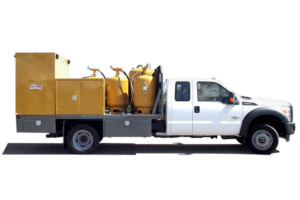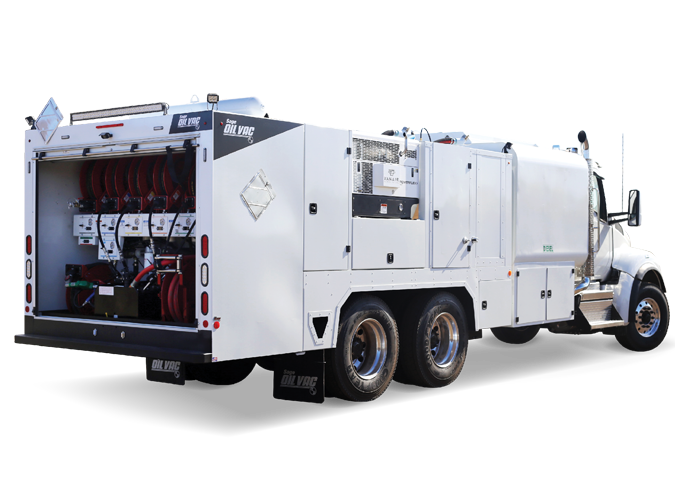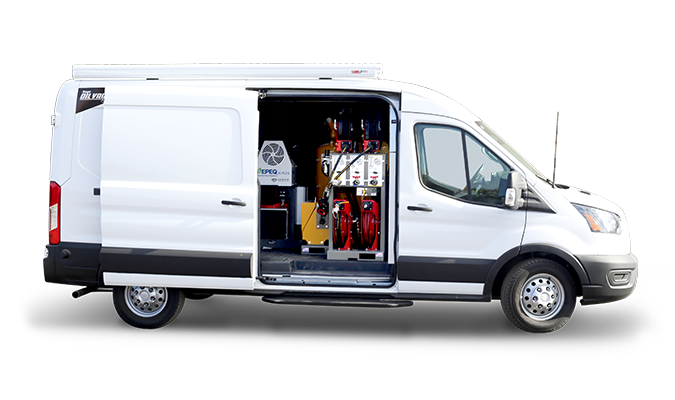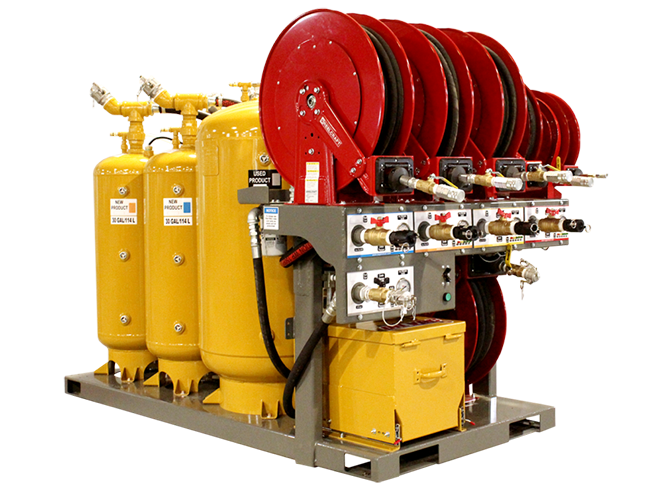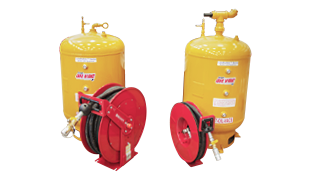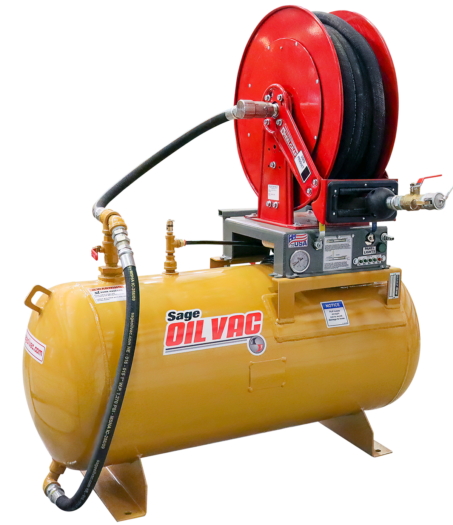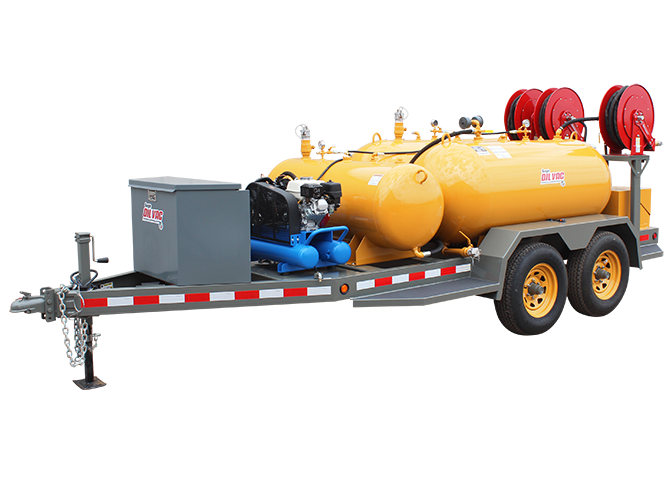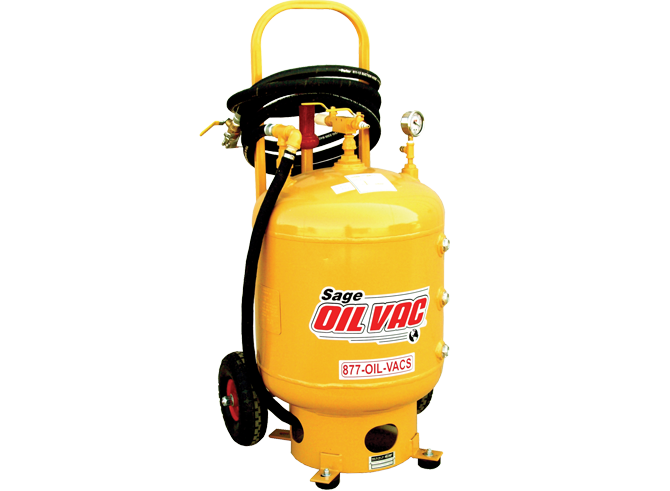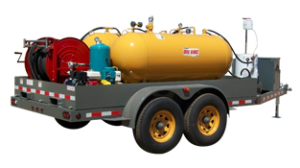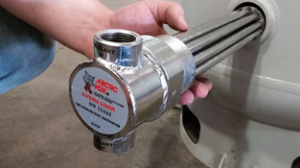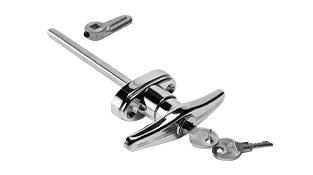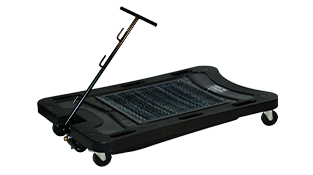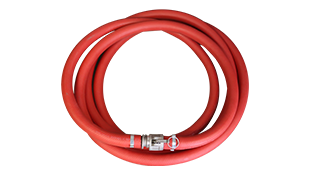Servicing a truck fleet scattered across multiple plant locations presents mindboggling logistical challenges for dedicated shops. So here’s the million-dollar question: Do you bring all the equipment to the shop for preventive maintenance, or do you bring the shop to the equipment with a preventive maintenance trailer?
Maschmeyer Concrete faced this daunting decision with its fleet of trucks distributed across multiple plant locations in Florida. The company’s dedicated service shop locations were a short drive from the plants, but downtime traveling back and forth between the plants and the service shops proved costly. With the company based in the Sunshine State, there is no off season. The trucks stay in constant motion — and downtime equates to lost productivity. Serviced trucks need to be ready for work when the sun rises.
Since 1986, Maschmeyer Concrete has become one of Florida’s leading ready-mix concrete, block and building materials suppliers. This privately held, family-operated business is among only a handful of concrete producers recognized as Silver Premier Producers by the National Ready Mixed Concrete Association. To earn this honor, your company must meet rigid standards in production, quality control, environmental protection and customer service.
By consistently delivering quality products in a safe and timely manner, Maschmeyer Concrete has grown to several locations across the state with ready-mix concrete plants and block plant locations servicing customers throughout the Southeast, Central and Tampa Bay regions of Florida.
This work is carried out with a fleet of ready-mix trucks, heavy-haul trucks that transport the concrete blocks and dump trucks used to deliver sand and reclaim crushed concrete. Preventive maintenance is especially important in the ready-mix business. These trucks carry perishable loads that can harden in the mixing drums, meaning unexpected breakdowns can become a maintenance nightmare.
Rethinking preventive maintenance
Maschmeyer initially chose to bring all its trucks to the dedicated shop for service versus servicing them with a preventive maintenance trailer at the concrete production plant. Here’s how it worked. Truck drivers would transport the trucks from their plant location to the shop when it was time for preventive maintenance. These drivers then contacted a rideshare app for a ride back to their home plant. When service was completed, the driver would need to be transported back to the service shop to pick up the truck.
Think of all the time and money used throughout the process. The diesel consumed by the trucks traveling back and forth to the shop. The driver’s time in transport or waiting for a lift. Not to mention the cost of all those rideshares.
Six years ago, Maschmeyer Concrete made the decision to change course and bring the shop to the equipment. The company initially built its own preventive maintenance trailer, but it came with a few drawbacks. Technicians drained oil into pans, which was then pumped from the oil pans into a 70-gallon waste tank. It was not an ideal setup. The company wanted a turnkey solution that would increase oil change efficiency.
Fleet Maintenance Manager James Salmon realized it was time to find a solution that would better meet the company’s evolving needs. He reached out to Mark Steinberg at ACME Truck Body and purchased a Sage Oil Vac 5120 jobsite trailer. This trailer streamlined preventive maintenance for Maschmeyer Concrete, eliminating waste and increasing truck driver job satisfaction. Transport of drivers and trucks stopped. The company now services the trucks at the plant, meaning the equipment is ready to go the next morning.
The Sage Oil Vac preventive maintenance trailer helps Maschmeyer perform three oil changes per night. The trucks being serviced require 15W-40 diesel engine oil, hydraulic fluid, antifreeze and 85W-140 gear oil. The concrete company needs to carry sufficient quantities of these fluids to prevent trips back to the shop. The 5120 jobsite trailer’s 120-gallon (454.25-L) used oil tank and four 80-gallon (302.83-L) fresh product tanks proved up to the task.
Work never stops. Neither do the trailers.
To maximize jobsite efficiency, Maschmeyer purchased two additional Sage Oil Vac 5120 jobsite trailers to service trucks at its plants. The added trailers help them get maintenance done, whether the trucks are located near Orlando, Tampa Bay or Palm Beach.
The quality and durability of the Sage Oil Vac 5120 jobsite trailers keep the Maschmeyer fleet rolling year-round, which is important since the company never slows down. Over the last six years, the 5120 jobsite trailers have not missed a single day of work. All repairs have been minor, and the trailers have been fixed and operational the same day.
The Sage Oil Vac preventive maintenance trailer fits well with Maschmeyer Concrete’s commitment to safety and protecting the environment. Every Sage Oil Vac lube trailer houses a patented, pump-free, low-maintenance fluid exchange system that protects the operator and the environment. The tanks are not vented to the atmosphere and the risks of spills or exposure are minimized.
Trial and error provides the perfect solution
Maschmeyer tried two approaches to preventive maintenance: bringing the trucks to the shop and bringing the shop to the trucks with a preventive maintenance trailer. The verdict? Sage Oil Vac 5120 jobsite trailers provide the most cost-effective oil changes for the company. Reduced travel time for the drivers, reduced fuel consumption, the elimination of rideshare transport, and most importantly, the trucks are ready to roll at sunrise.
Check out the complete lineup of Sage Oil Vac fuel and lube trailers.
When you have more than 200 pieces of heavy equipment to service on 35 jobsites across the fourth largest U.S. city, efficiency is essential. That’s the challenge Sprint Sand and Clay faces each day as a contractor specializing in dirt work and selling construction materials to contractors and home builders in Greater Houston, Texas. When its lube truck leaves the shop, it may travel two hours one way to a jobsite.
“It’s important that the lube truck has enough storage and fluid capacity to service many pieces of equipment on that side of town before going back and refilling the truck,” said Kyle Cain, president of Sprint Sand and Clay.
Sprint Sand and Clay’s service technician typically performs preventive maintenance on every piece of equipment while the truck is on a jobsite to maximize efficiency.
“In today’s world, you have to be as efficient as possible. We attribute our success a lot to equipment that we use and the innovation that’s provided with that equipment, from our dump trucks to our equipment to our lube trucks,” said Cain.
Expanding the labor pool
Let’s face it, drivers with a CDL are in high demand and difficult to find. Contractors like Sprint Sand and Clay are competing with over-the-road haulers and local businesses. This means these drivers can demand higher compensation. Many don’t want to service equipment, either.
“Trying to find a CDL driver that wants to perform the service, not just take a load from point A to point B all day, is tough,” said Jacob Phillips, vice president of operations at Sprint Sand and Clay.
Without the need for special licensing requirements, almost any technician in your shop can be assigned to run a non-CDL truck.
Non-CDL truck to the rescue
So, when Sprint Sand and Clay knew they needed a solution that would balance capacity with efficiency, they turned to a Sage Oil Vac non-CDL open lube body. The non-CDL bodies are a great fit for heavy equipment preventive maintenance, featuring a 180-gallon (681.37-L) used oil tank and five fresh product tanks that can be configured for any fluids.
“We really believe in the small compact size of a [Sage Oil Vac non-CDL] lube truck. It’s very efficient and the cost of ownership compared to having a larger CDL truck with a CDL driver just makes sense,” said Cain.
The non-CDL truck provided a more cost-effective solution than relying on the local equipment dealer for preventive maintenance.
“I think when you compare what we would have to pay from the dealership versus doing it ourselves, it just really made sense for us,” said Cain.
Despite its small size, the Sage Oil Vac non-CDL open lube body has been up to the task of servicing Sprint Sand and Clay’s 200-machine fleet. It offers the capacity to service all the equipment on up to two jobsites without having to go back to the shop to fill up. Plus, it’s easy to get around in.
“It’s been very easy to maneuver in traffic, especially in Houston,” noted Cain.
Maneuverability coupled with quick connect fittings and exclusive pump-free technology of the Sage Oil Vac system reduces the chance of oil spills.
“A lot of our jobs are on government entity property — cities and counties — so being able to get in and out without having any spillage or environmental issues is very important to us,” said Cain.
Slash operating costs
Competitive mobile lube trucks often require a compressor to run 100% of the time. Sage Oil Vac trucks are different. Once the on-board compressor creates the necessary vacuum for the system, it shuts off. The technician can service an entire machine without turning the compressor on again.
“We don’t depend on the truck idling all day,” said Cain.
The compact size and efficient operation of the non-CDL truck gives Sprint Sand and Clay a cost-effective heavy equipment service option.
“If something happened to our lube truck, we’d be solely dependent on the dealer to come service our equipment. With the markup and cost, it just wouldn’t be efficient for us,” said Cain.
Learn more about the complete range of Sage Oil Vac trucks.
Working around heavy machinery requires constant vigilance. Slips and falls while getting on or off heavy machinery are common causes of injury. Fatigue can also contribute to careless mistakes. This June, take some time to review your preventive maintenance safety efforts — both in the shop and in the field — in recognition of National Safety Month. The following four preventive maintenance tips can help protect your technicians during the busy season.
Jobsite Safety Tip 1: Simplify the task.
Making daily maintenance simpler is an easy way to help keep your technicians safe.
For decades, heavy equipment oil changes were a rather straightforward, labor-intensive process. Technicians spent hours on the ritual of removing oil plugs and catching the oil in a container. After removing the filter while attempting to minimize spillage, new oil was added — typically using a funnel.
This often required the technicians to crawl around — and even under — the machine to pull plugs, access filters and position themselves to pour oil from jugs into funnels. Technicians often worked in close proximity to hot oil and carry oil in heavy pails.
Modern oil change technologies, like the Sage Oil Vac system, streamline the oil change process. The mobile lube system replaces the antiquated practice of manually lifting heavy buckets or jugs and crawling around the machine when transferring bulk fluids to the equipment.
Jobsite Safety Tip 2: Minimize exposure to oil.
Keep the jobsite and technicians as clean as possible.
The enclosed, pump-free Sage Oil Vac system protects the technician and the environment, as tanks are not vented into the atmosphere. Additionally, clean, sealed tanks prevent contaminants from being introduced into fresh fluids. There is also less chance of spillage on the job.
Accessories such as the Sage Oil Vac barrel straw, allow your technicians to transfer oil safely and quickly from bulk or drum storage into the mobile lube system with minimal effort and virtually no spills. They will not only be much cleaner at the end of the day, but less fatigued.
Jobsite Safety Tip 3: Reduce time-related stress.
The summer busy season can put additional pressure on service technicians, and using conventional mechanical pump-based systems can be time consuming.
The Sage Oil Vac pump-free vacuum technology uses compressed air to push oil out of the tank. It removes used oil and dispenses fresh oil at up to 15 gallons per minute, allowing more machines to be serviced per day than units utilizing mechanical pumps.
By making the oil change process more efficient, fewer employees are needed to keep up with routine maintenance. This is critical in today’s labor market. Technicians are more productive when they have all the fluids they need to service the fleets without the added stress of frequent trips to the shop. Sage Oil Vac offers a wide range of solutions to match your maintenance demands with an optimized mobile lube solution.
Jobsite Safety Tip 4: Reduce jobsite noise.
Conventional mechanical pump-based based oil change systems require a compressor to run 100% of the time. Sage Oil Vac systems, on the other hand, conserve air by creating and maintaining vacuum pressure within the tanks. This reduces air compressor run time by up to 70% over conventional pump-based equipment. The result? Less noise exposure for your technicians and less onsite noise.
Following these four jobsite safety tips will provide a better working environment for your valued technicians. Contact Sage Oil Vac to learn how we can help your technicians safely and efficiently keep your fleet running during the heat of the busy season.
When Doug Holmes started his construction business in Lubbock, Texas, all his crew needed to finish construction equipment maintenance was a pickup truck with diesel tank in the back. Ten years and 75 pieces of equipment later, that pickup truck just wasn’t cutting it for the Doug Holmes Construction fleet. Even adding more pickups didn’t help. Holmes and his crew needed a new solution for efficient fuel and service — and they found it with a Sage Oil Vac Class 7 Fuel/Lube Body.
“When it showed up, it was every bit as good as we’d hoped it would be.”
– Doug Holmes, President of Doug Holmes Construction
Servicing heavy equipment out of a pickup
The Doug Holmes Construction crew works on projects across West Texas, from new construction to road construction. Their specialties include dirt work, concrete and asphalt. According to Holmes, there’s plenty of work to go around in Lubbock and the surrounding areas.
With construction work comes the need for heavy equipment — and with heavy equipment comes maintenance needs. In the beginning, Holmes’ team was able to fuel and service equipment out of a pickup. Then a fleet of pickups. After a while, even that wasn’t enough. Today, they need to move up to 800 gallons of fuel daily.
“We started out being a small business and as our business needs grew, we outgrew the ability to service and fuel our equipment,” Holmes said.
Holmes knew they needed something different to get the job done. In every other part of the business, state-of-the-art equipment and technology were helping Holmes and his crew get an edge over the competition. It was time to bring the fuel and maintenance equipment up to speed.
The search began at CONEXPO 2020. Holmes and his son — who works for the family business — were on the lookout for a truck that could help streamline maintenance. After walking the massive show floor and connecting with different brands, they found a Class 7 FL7120S Fuel/Lube Body from Sage Oil Vac to be the best fit.
Simplifying construction equipment maintenance
The difference between their old setup and the new setup was clear as soon as the new Class 7 work truck arrived on site.
“When it showed up, it was every bit as good as we’d hoped it would be,” Holmes said. “We were really excited to be able to expand the ability to grow and to make life much easier than what we had been dealing with for the last few years.”
Before adding their Sage Oil Vac truck, it took three workers to keep up with fuel and service demands across the fleet. With the new addition, one person can maintain the fleet. Today, that’s Nick Balderama. The service tech for Doug Holmes Construction is out in the field every day with the Class 7 truck.
“There’s never a minute that I’m not busy throughout the day working here,” Balderama said. “This truck really helps me get a lot done each day because it has all of the fluids that I could possibly need.”
Outfitted with a 1,000-gallon diesel tank and five product tanks, the Class 7 Fuel/Lube Body can handle everything from DEF to hydraulic oil. In fact, it includes a 60-gallon DEF tank. That helps Balderama be more productive without frequent trips to the shop. But it’s not just the capacity of the vehicle that keeps things moving efficiently. The size of the truck offers an advantage too. Redesigned to include a shorter tank and wheelbase, the Class 7 Fuel/Lube Body helps crews like Doug Holmes Construction navigate jobsites.
“With this truck, I can actually roll right up to wherever I need to be to service a piece of equipment, whereas if it were a little bit larger, sometimes I would have to just post up somewhere and let that equipment come to me,” Balderama said.
Service beyond the sale
When Holmes selected Sage Oil Vac equipment to help streamline construction equipment maintenance, he found a partner invested in keeping their mobile lube equipment up and running.
“They have been extremely easy to work with. Anytime that we have a problem, they take it to heart. They get us stuff as quickly as we can,” Holmes said. “They know that we’re running one big truck that services a whole lot of equipment and they’ve been able to keep our uptime running, and they’ve made life very smooth and easy for us for the last two years.”
Learn more about the Class 7 truck Doug Holmes Construction trusts to keep their operation ahead of the game.
Warmer temperatures and longer days can only mean one thing. The busy season is almost here for preventive maintenance professionals. Are you ready for it? If you’re not stocked up on the preventive maintenance parts you need, the answer is probably not. Fortunately, you can implement a parts management strategy to help your operation get — and stay — ready for whatever the season throws at you. After all, downtime is money out the window. Here are five steps that can help keep your crew on track.
Before you do anything else: Implement a consistent preventive maintenance program
The more consistent you are with your equipment maintenance program, the easier it will be to manage your parts inventory. No more wondering which preventive maintenance parts you have on hand. Your crew will be so familiar with your process and inventory that they won’t even need to look it up in your records — even though it never hurts to double check.
Now, on to the other steps your operation can take.
Step 1: Start with a look back
Does your operation keep a record of the parts you’ve ordered in the past? That could be the key to streamlining the ordering process this year. Keep an eye on which parts pop up frequently in your records. Those are likely the ones your operation uses the most often — and are likely useful to always have on hand. After all, there’s nothing worse than not having the right part in your inventory. It puts your work on hold and can disrupt your busy schedule.
Step 2: Go through your current supplies
Have limited records? You can also get an idea of what parts you need by taking a thorough look through your current inventory. This is also the perfect time to update your inventory list — or get one started. The more up to date your list is, the more confident you can be when ordering additional parts.
Step 3: Figure out usage rates
Once you know which preventive maintenance parts you need, you’ll want to know the quantity to keep on hand. The most accurate way to make that happen is to calculate usage rates. For each type of part, consider how frequently it must be changed and the factors that impact that timeline. Those could include the season and jobsite conditions Then, think about how many pieces of equipment will need service for that part.
Take an engine oil filter for example. You could be changing that filter every 250 hours on each piece of equipment. Do you have enough wear parts on hand to keep up with that demand?
Step 4: Create an inventory buffer
You know what they say about the best laid plans. Even if you’re planning ahead, calculating what you need and keeping inventory on hand, a lead-time or delivery issue could mean you don’t have the preventive maintenance parts you need when you need them. Especially if you’re only keeping exactly what you think you need on hand.
With an inventory buffer, you’ll always have a few more parts than you think you need. They’ll come in handy if supply chain issues threaten to interrupt your workflow.
Step 5: Track inventory levels
Even if you have a feeling you know what your equipment fleet will need during the busy season, make the next year even easier with consistent inventory tracking. Whether you keep track on paper or through an inventory management system, you’ll start to understand your needs in the long term. The more information you collect over time, the more accurate your predictions will be for your preventive maintenance parts.
Streamline the parts-buying process
Once you know what you need for the busy season, you’ll want an easy way to stock up. When it comes to your Sage Oil Vac equipment, we make it easy. Order everything you need online, and we’ll ship it right to your door. It doesn’t get better than that. We have everything you need to keep your preventive maintenance equipment ready to go, from wear parts to lube carts — not to mention exclusive accessories to make the fluid exchange process cleaner, safer and faster. Start shopping today.
Heard of Dirty 30? Forget about it. At Sage Oil Vac, the last 30 years have been full of cleaner, safer and faster oil changes. We couldn’t have made it this far without you. Celebrate three decades of mobile lube innovation with a look back at our story so far.
Starting with humble beginnings
In 1993, Gary Sage was a farmer looking for a better way to change oil on his irrigation engines. He was tired of spilling oil on himself and the ground. Turns out, so were his neighbors.
Gary’s fellow farmers turned into the first Sage Oil Vac customers. They placed orders for the innovative new system, built without pumps. Compressed air made it possible to move fluid to and from sealed tanks — without a spill in sight.
Units were built according to the harvest schedule, with most of the manufacturing happening after crops were harvested in the fall. Soon though, that wasn’t enough. Customers had discovered the power of the innovative equipment and they wanted more.
Meeting customer demand
In 2001, Gary moved his operation to Amarillo, Texas, and brought some extra help on board. Sage Oil Vac was officially born — no longer a side project for a busy farmer. With the headquarters open, Gary and team could focus on delivering the equipment customers wanted for their preventive maintenance programs.
“It was a big deal to move to Amarillo,” said Gary Sage. “We knew we were taking a plunge, but we were confident. We knew it was what we needed to do to best support our customers.”
After the move, the Sage Oil Vac crew started to expand the product lineup. The original Sage Oil Vac system was translated to carts, trailers, skids and trucks, all featuring the pumpless technology that helped crews reduce equipment problems and maintenance costs. Eventually, the fully customizable LubeBuilder™ system was added to give customers the flexibility to create the exact fluid exchange system they need.
Customer demand drove equipment innovation and led to the addition of fuel and other fluid capabilities.
Storage and customization were also important considerations for helping customers get the job done their way.
“We continued to listen to the customer, adapt our existing product to the changing world of on-site fluid maintenance and develop new products,” added Aaron Sage, current Sage Oil Vac CEO and Gary’s son. “That’s where our drive to be innovative comes from — our passion for meeting customer needs. And we’re not stopping any time soon.”
Realizing the power of partnership
Over the years, Sage Oil Vac has had some incredible partnerships with our customers that have driven growth across the world.
In 2004, the U.S. Army Reserve called on Sage Oil Vac to build custom mobile lube equipment for their work. It was more than an honor for the team to prepare the systems. The work also helped double business for Sage Oil Vac, resulting in a 24,000-foot manufacturing facility expansion.
In 2007, the Sage Oil Vac team created another equipment innovation that changed the game for the emerging wind energy market. The wind gearbox oil exchange (GOEX) system created a safer way to manage oil, antifreeze and other fluid changes on turbines.
After that, it was time for Sage Oil Vac to go international. Australia was the first stop in 2008. With an economy heavily influenced by resource extraction and mining, there was quite a bit of heavy equipment in need of preventive maintenance. Sage Oil Vac worked with a western Australia oil distributor that would later become Oil Vac Systems of Australia. The two companies built a relationship focused on innovation and moving the local industry forward — and away from slower, less reliable pump systems.
Europe was next with a distributor in the wind energy industry. Now, Sage Oil Vac systems are being used in several countries for cleaner, safer, faster fluid exchanges.
Moving toward a cleaner future
In 2016, Aaron Sage took over as Sage Oil Vac CEO. Under his leadership, the company reached a major milestone: three decades of equipment innovation and cleaner, safer, faster oil changes. Once a one-man shop, Sage Oil Vac is now a 60-person team building the equipment that powers preventive maintenance for operations around the world.
For 30 years, Sage Oil Vac has been committed to helping customers make the most of their time on the jobsite. And we’re going to be here for a whole lot longer. We hope you will too. Thanks for being a part of our story.
In your mind, picture a traditional lube/jobsite fuel truck — the kind that’s been common for fuel and oil delivery around the U.S. for decades. You may see a large tractor-style truck with a bed dominated by a fuel tank around 1,000 gallons in size, likely rolling on a Class 7- or Class 8-sized chassis and driven by someone with the required commercial driver’s license (CDL).
That’s long been the norm for lube and jobsite fuel trucks servicing machinery around the country. Yet, a combination of factors has many contractors and operators looking to smaller trucks that don’t require a CDL — those in Class 5 and Class 6 — to help them care for equipment on the job. In the process, they’re discovering the cost and efficiency benefits of deploying a smaller class of trucks.
Changing industry dynamics
Commercial lube and jobsite fuel trucks typically range in size from Class 5 to Class 8. Each class covers vehicles with a specific gross weight range starting at 16,001 pounds. A CDL is required to operate a commercial vehicle above 26,000 pounds in weight, making it a necessity to lawfully operate a Class 7 or Class 8 commercial truck. However, Class 5 and Class 6 vehicles in the non-CDL class do not carry the same restrictions.
But despite growing demand for all types of commercial transportation that requires a CDL — namely over-the-road trucking — the number of licensed commercial drivers in the U.S. has not increased. Despite that demand boost, a similar increase hasn’t happened in licensed commercial drivers. In short, for work requiring a CDL, the demand is growing but the qualified labor pool is not.
“There’s just a shortage of qualified, skilled drivers. It’s as simple as that,” said Sage Oil Vac CEO Aaron Sage.
The CDL shortage is just part of the equation making non-CDL lube trucks the solution for many contractors. Traditional Class 7 or Class 8 trucks are large and have high fluid capacities, enabling them to service a lot of equipment. However, due to their size they’re also less fuel efficient when traveling long distances and can be difficult to maneuver on jobsites with uneven terrain and a lot of equipment to service. Add regulatory pressure — which becomes an even bigger issue when traveling across state lines — and operating these larger trucks suddenly can become more than a greater expense and inconvenience. They can be a hindrance to a company’s future growth.
“If you’re working at a remote location that has a lot of challenging terrain, a smaller jobsite fuel truck is going to be more nimble and will perform better in terrain like that than a larger, tandem-axle truck,” Sage said, adding non-CDL Sage Oil Vac lube trucks are built on Ford and Dodge Ram Class 5 and 6 truck chassis, enabling them to better navigate more varied jobsite terrain than heavier dual-axle tractor-based trucks. Plus, it allows the owner to choose which brand best fits their style.
Filling a growing niche
Things like the decline in CDL-certified drivers and the efficiency of smaller trucks have made non-CDL machines a more viable option than in the past for many contractors, for both operational and managerial reasons. On top of the benefits of the smaller trucks, non-CDL trucks enable mobile equipment service providers to do their job without requiring operators to have commercial driver’s licenses. This opens the door to more hiring opportunities for company owners and managers, creating more employment opportunities for operators. In this way, Sage Oil Vac non-CDL lube trucks are helping fill a growing niche in the service truck sector.
“We are always honing the design of non-CDL lube truck bodies and putting them with trucks that don’t require a CDL to operate. Many in the industry are talking about moving to smaller jobsite fuel trucks for many reasons. We are working hard to add value to their operations by offering equipment that can make them more efficient,” Sage said. “We want our customers to look at their equipment and determine which system will work best for them. In some cases, multiple non-CDL trucks will be more cost-effective and efficient than one Class 8 truck. It’s sometimes hard to get people to make a change like that, but I think when you put pencil to paper, these types of changes will pay for themselves in a matter of months.”
The Sage Oil Vac non-CDL lube body lineup includes both open and enclosed models, allowing crews to choose equipment tailored to their work. The open lube body truck prioritizes agility on the job, offering a 180-gallon tank for used oil and a combined 340-gallon capacity for fresh fluids for an 8,328-pound (3,777.5 kg) total operation weight. Meanwhile, the non-CDL enclosed trucks provide additional fresh and used fluid capacity and protection against colder climates — for year-round productivity. Most importantly, both body options include our exclusive pump-free technology.
Learn more about Sage Oil Vac non-CDL lube truck bodies. Hear from one of our customers how a Sage Oil Vac non-CDL lube truck streamlined their equipment maintenance.
Sage Oil Vac is charging into trade show season to celebrate the strong, long-lasting relationships fostered over three decades. There’s no such thing as Dirty 30 when acknowledging this anniversary. That’s because Sage Oil Vac keeps busy cleaning up jobsites with pump-free fluid changes since 1993.
Help the entire Sage Oil Vac family celebrate 30 years of keeping service technicians’ clothes squeaky clean and your jobsites spotless at two of the top industrial trade shows. We’re looking forward to seeing you at Work Truck Week 2023 in Indianapolis, Indiana and CONEXPO-CON/AGG in Las Vegas, Nevada. Plus, we’re bringing exclusive, limited-edition anniversary hats to mark the occasion – because we’ll only turn 30 once. We’ll tell you how to reserve your free hat later.
Two venues, a single solution
These trade shows are pretty different, but what do they have in common? Attendees at both shows deal with messy fluid changes. Sage Oil Vac is bringing a solution to both shows to help take care of the problem: the newly redesigned Class 7 Fuel/Lube Body.
Work Truck Week – March 7-10 (Indianapolis, Indiana)
Work Truck Week 2023 serves as North America’s largest work truck event and provides the opportunity to check out the latest commercial vehicles, equipment and technology. Sage Oil Vac will be in the main exhibit hall at booth 2811. Exhibit hall hours run from 9:30 a.m. to 5:00 p.m. on Wednesday, March 8 and Thursday, March 9. The exhibit hall will also be open from 9 a.m. to noon on Friday, March 10. Come see the latest lube truck advancements. Bonus: Stop by for free breakfast starting at 9:30 a.m. on Wednesday, March 8.
CONEXPO-CON/AGG – March 14-18 (Las Vegas, Nevada)
CONEXPO-CON/AGG is the largest construction trade show in North America. With over 2.7 million square feet of exhibitor space and 1,800 exhibitors, this is a one-stop shop for everything you need to run a construction business. Stop by the first level of the South Hall in booth S62329 to learn about spill-free oil changes on the jobsite and opportunities to enhance productivity. Show hours run from 9:00 a.m. to 5:00 p.m. Monday through Friday and from 9:00 a.m. to 3:00 p.m. on Saturday.
The star of the show
At both shows, the Sage Oil Vac crew will be giving an exclusive look at the latest enhancements to the redesigned Class 7 Fuel and Lube Body, including:
- New level sensors and an upgraded display panel: Set alarms for fluid levels to know right away whether you’ve got low fluids or an overfill situation. Plus, see what you’ve got left in the tank with guide wave sensors, displayed in either percent or gallons remaining.
- Pumpless DEF tank: Use exclusive Sage Oil Vac vacuum technology to move caustic fluid without shelling pumps.
- Redesigned 1,000-gallon diesel tank: A shorter tank makes navigating tight jobsites easier and features round corners that increase durability. Even better, you get an extra 7 cubic feet of storage where the old tank used to be.
- Shorter 187-in wheelbase: Cutting 12-in from the wheelbase provides increased job site maneuverability.
Join the party
No party is complete without gifts. We’re bringing exclusive, limited edition Sage Oil Vac anniversary hats and we want to save you one. Check out our Work Truck Week 2023 and CONEXPO-CON/AGG 2023 landing pages to let us know if you will be attending either show. Don’t miss out, supplies are limited, and we only turn 30 once!
We’re excited to celebrate at our booth to discuss your business needs. We promise to keep it clean!
Come as you are. Any technician who runs a Sage Oil Vac will tell you, cleaning up for the big event after a day in the field is no longer required.
Heavy equipment shows offer unique opportunities to stay on top of the latest technology and industry developments. That information can give your company a competitive advantage. These shows also offer excellent ways to network and form beneficial relationships that can help grow your business in the short and long term.
Let’s face it though, the shows can also be intimidating, covering a vast amount of real estate that easily can leave you dazed and confused if you don’t go in with a plan. We’ve all been there. You spend valuable resources to be there, so it’s important to make the most of your investment.
To help pull together a plan for your next show, we’ve compiled 10 tips to help ensure success at even the largest shows:
Before the show
- Set goals and objectives for what you want from the show. This could be gathering specific information on new products, looking for alternative solutions to current preventive maintenance challenges, reconnecting with industry peers, developing new contacts, or learning about emerging trends in fleet maintenance.
- Register in advance. Registering early also gives you the best chance to book hotel blocks at discounted rates, if they are offered. You can usually find them on event registration pages.
- Be prepared. Research who you want to meet, schedule an appointment with them if you want uninterrupted time and come to the conversation with questions.
- Get your hands on a map and a directory to help plan out which booths you want to visit and in which order. Most shows post this information online at least a month out. Large equipment shows require a strategic approach to minimize the number of miles walked. Many of these shows cover acres and you want to minimize time spend traversing the same territory.
- On a related note, pack two pairs of comfortable shoes that can be used on alternate days. Feet can take a beating at a large trade show. Outdoor shows, specifically, have vast display areas. Check the weather a few days in advance and pack so you can dress accordingly.
- Consider setting aside time to attend an educational session being offered. Check the event schedule before you go and identify any presentations you may want to check out. The knowledge you gain could save your company in the future through increased efficiency or new processes that can streamline fleet management.
At the show
- Give yourself time. Navigating a large tradeshow floor often takes longer than you anticipate. Make sure the time allotted is realistic to achieve your goals. Once on-site, start walking the floor as soon as possible. This gives you time to cover the booths on your list without feeling rushed. After you cover the booths that you plan to visit, that leaves time to re-walk the show at your leisure.
- Taking a break can be a useful way to digest information at the moment, as opposed to rushing from one-time slot to another. On the flip side, don’t spend too much time at a single booth. That limits the time you have left to spend throughout the rest of the trade show.
- Don’t get distracted by work. You paid to attend the tradeshow and they do not happen often. Make the most of the opportunity. Prior to the show, make sure coworkers can cover your responsibilities back at the office. It is easy to get bogged down in the day-to-day operations going on back in the office and miss a large portion of the show.
- Keep an open mind. Look for new concepts that could potentially change the way your company operates. Focus on the present and future goals of your operation as well It is easy to dismiss new products and procedures based on current fleet maintenance practices. Listen to the pitch and reserve judgment until a later date.
After the show
- Prepare a summary of what you found, what you learned and what you discussed so you can bring this back to team members who couldn’t attend. This also helps you determine the return on your trade show investment. Without documentation, it is hard to determine if the time was well spent.
- Compile a list of action items. This includes following up on questions that were not answered during the trade show and scheduling time to discuss potential opportunities with your team.
A little preparation up front can pay off big time in terms of ‘take home’ value during show season. The size of these shows can catch the unprepared attendee off guard. It is easy to spend a day walking aimlessly through acres of displays. Don’t let that happen to you. Develop and execute a plan to take advantage of this unique opportunity.
Make sure to check us out at one of the shows listed below in the coming year. We’re excited to show you how the pump-free Sage Oil Vac line can take your preventive maintenance to the next level of efficiency, cleanliness and safety.
- CONDEX AED Summit – Jan 10-12 in Chicago, IL
- ARA Rental Show – Feb 12-15 in Orlando, FL
- Work Truck Week 2023 – Mar 7-10 in Indianapolis, IN
- CONEXPO-CON/AGG – Mar 14-18 in Las Vegas, NV
- Utility Expo – Sept. 26-28 in Louisville, KY
There’s no one-size-fits-all lube truck. Whether it’s a non-CDL vehicle or a custom lube truck, we’ll help you find one that’s just right for your operation. Working with the wrong size can waste time and money. If your lube truck is too small, you could fall behind on preventive maintenance (PM). Likewise, a lube truck that is too large for your needs costs more upfront and drives up utilization costs. Finding the right fit is all about balance. You need to meet your needs today and consider any planned growth to ensure your investment will also meet future needs.
No two fleets are the same. They come in all sizes and contain all types of equipment for use in diverse geographical locations.
Size your tanks
To determine the specific volume of each product your lube truck will carry, start by calculating the number of units you’ll service per day before you make a trip back to the shop to offload used fluids and fill up with new. Check service interval recommendations and refill capacities of each machine in your fleet to figure out how much of each fluid you’ll need.
Once you determine the quantities of products you need on your lube truck, you can determine what sizes of tanks you’ll need. If you do a lot of work on remote jobsites, higher-capacity tanks may be a better choice to minimize the number of trips you’ll have to make per day. You’ll also be able to calculate the total weight of the products you’ll be carrying to help determine what size of truck you’ll need.
The right truck size for your product capacity needs
For both lube-only and fuel and lube bodies, Sage Oil Vac offers non-CDL, Class 7 and Class 8 truck chassis operations. The truck classes are determined by the gross vehicle weight range (GVWR), which is directly related to the size of the product tanks that can be mounted to the truck.
- Non-CDL trucks have a GVWR of 16,001 to 25,900 lb.
- Class 7 truck has a GVWR of 26,001 to 33,000 lb.
- Class 8 truck has a GVWR greater than 33,000 lb.
Let’s look at an example of how this may break down using a Sage Oil Vac Class 7 Standard Model 7120P fuel/lube body. It has a 1,000-gallon (3,785.41-L) fuel capacity with a variety of tank options. This may include:
- One 120-gallon (454.25-L) fresh oil and lube tank
- One 120-gallon (454.25-L) used oil/waste oil tank
- Three 60-gallon (227.125-L) fresh oil and lube tanks
- One 60-gallon (227.125-L) fresh coolant/antifreeze tank
- One 60-gallon (227.125-L) stainless steel DEF tank
- One 120-lb grease keg holder
Now compare that to the Sage Oil Vac Class 8 8180 fuel/lube body that can deliver 2,000 gallons (7,570.824 L) of diesel to your jobsite in one trip. Tank options include:
- One 180-gallon (681,374-L) used oil tank
- Five 120-gallon (454.25-L) fresh oil and fluid tanks
- One 60-gallon (227.125-L) fresh coolant/antifreeze tank
You can see the extra capacity benefits as the GVWR increases.
Other considerations
While fluid-handling capacity is a primary consideration in choosing the right lube truck, you need to weigh that against other practical considerations, like the truck’s ability to access the site and the availability of drivers.
Finding drivers is perhaps your biggest challenge. Drivers are required to have a CDL to operate a commercial vehicle above 26,000 pounds, which includes all Class 7 and Class 8 truck chassis. These drivers are in short supply, with demand for their services continuing to increase.
This has led to the growing popularity of trucks that can be operated without a CDL, which increases the potential labor pool. Another benefit of these non-CDL trucks is that they are nimbler and will perform better in rough terrain than larger tandem-axle trucks.
Customized lube trucks versus off-the-shelf solutions
You can choose either off-the-shelf standard solutions or custom-designed lube handling products. A custom lube truck lets you build a service vehicle to match your exact needs for maximum efficiency. You should consider the lead time when thinking about ordering a customized solution.
If after weighing all this information, you find you don’t need a dedicated lube truck, review the complete line of Sage Oil Vac carts and skids. This includes fully customizable LubeBuilder™ systems that can tailor a lube skid solution for your existing work trucks. This unique approach to a customizable lube truck allows Sage Oil Vac to create tank configurations and capacities that match your needs.
Ask the experts at Sage Oil Vac
Choosing the best mobile lube truck solution is a big decision that requires carefully weighing several variables. Contact Sage Oil Vac for expert advice that will help you identify the best fit for your preventive maintenance needs.
Ready to dig deeper? Check out our truck and body lineup for the full specs. Don’t forget to check out the case studies featuring our custom lube truck solutions.

